Art & Exhibitions
Painter Alice Neel’s Career Survey at the Met Suggests What Empathy Can Look Like in an Age of Difference—See Images Here
Neel had a deep sense for her sitters and their idiosyncrasies.
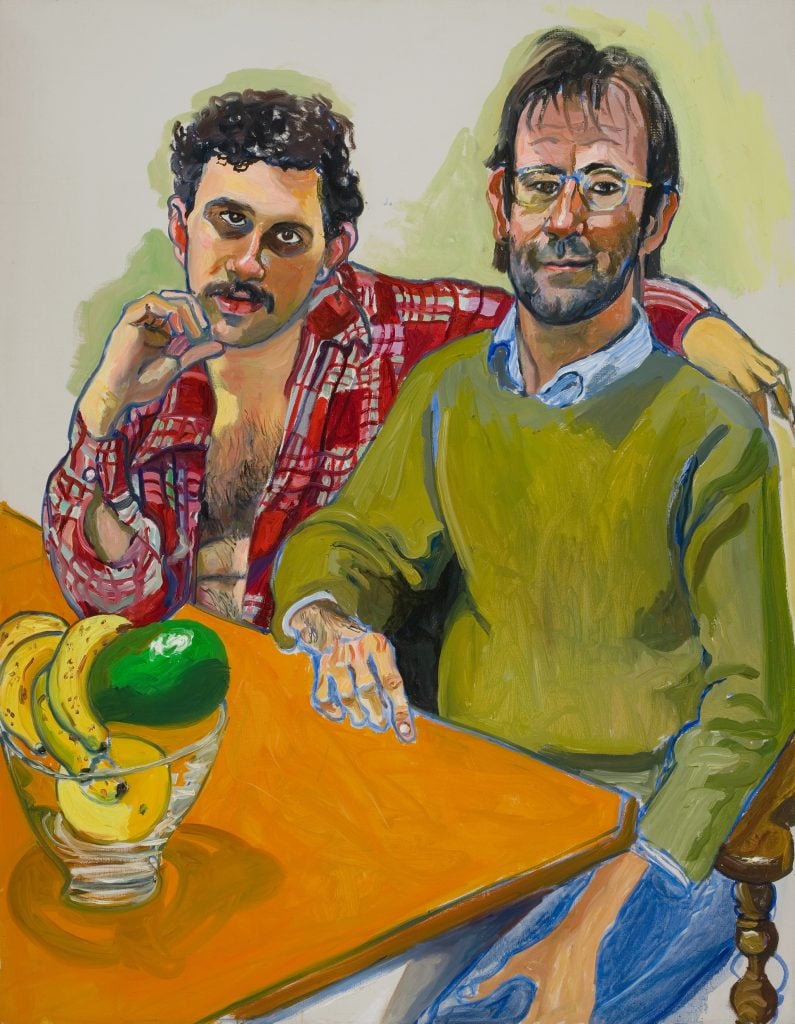
Neel had a deep sense for her sitters and their idiosyncrasies.

Artnet News

What the museum says: “‘Alice Neel: People Come First’ is the first museum retrospective in New York of American artist Alice Neel (1900–1984) in 20 years. This ambitious survey positions Neel as one of the century’s most radical painters, a champion of social justice whose longstanding commitment to humanist principles inspired her life as well as her art, as demonstrated in the approximately one hundred paintings, drawings, and watercolors that will appear in the Met’s survey.
Images of activists demonstrating against fascism and racism appear alongside paintings of impoverished victims of the Great Depression, as well as portraits of Neel’s neighbors in Spanish Harlem, leaders from a wide range of political organizations, queer artists and performers, and members of New York’s global diaspora. The exhibition also highlights Neel’s erotic watercolors and pastels from the 1930s, her depictions of mothers, and her paintings of nude figures (some of them visibly pregnant), all of whose candor and irreverence are without precedent in the history of Western art.”
Why it’s worth a look: For a long time, art historians weren’t quite sure what to do with Alice Neel. She painted representational pictures of everyday people in an era when abstraction was king and figuration was widely considered finished. She worked in New York, where finding space in an art world dominated by the outsize influence of the Jackson Pollock and Willem de Kooning was difficult. And she was a woman, which made it that much harder to find recognition.
But the past few years have seen a renewed surge of interest in her work. A sterling exhibition at David Zwirner in New York curated by writer Hilton Als in 2017 brought Neel to fresh audiences, and that show’s catalogue extended the exhibition’s reach beyond its closing date. Now, with this full career survey at the Met, she finally finds a permanent place in the Western canon as a forerunner to the representational painters who dominate today’s headlines.
Neel spent many of her years in New York, and as the Met puts it, the city was “her most faithful subject.” She had a deep sense for its characters, their idiosyncrasies and mannerisms, and a reverence for difference, plurality, and individuality. Not unlike contemporary artists like Amy Sherald or Salman Toor, she was able to connect with her sitters’ identities and to draw out their complexities while still maintaining a relatively simple yet vibrant painterly mark.
“For me, people come first,” Neel said in 1950. “I have tried to assert the dignity and eternal importance of the human being.” That’s the best lesson anyone can draw from the show—especially these days, when empathy is at once more necessary and rarer than ever.
What it looks like:
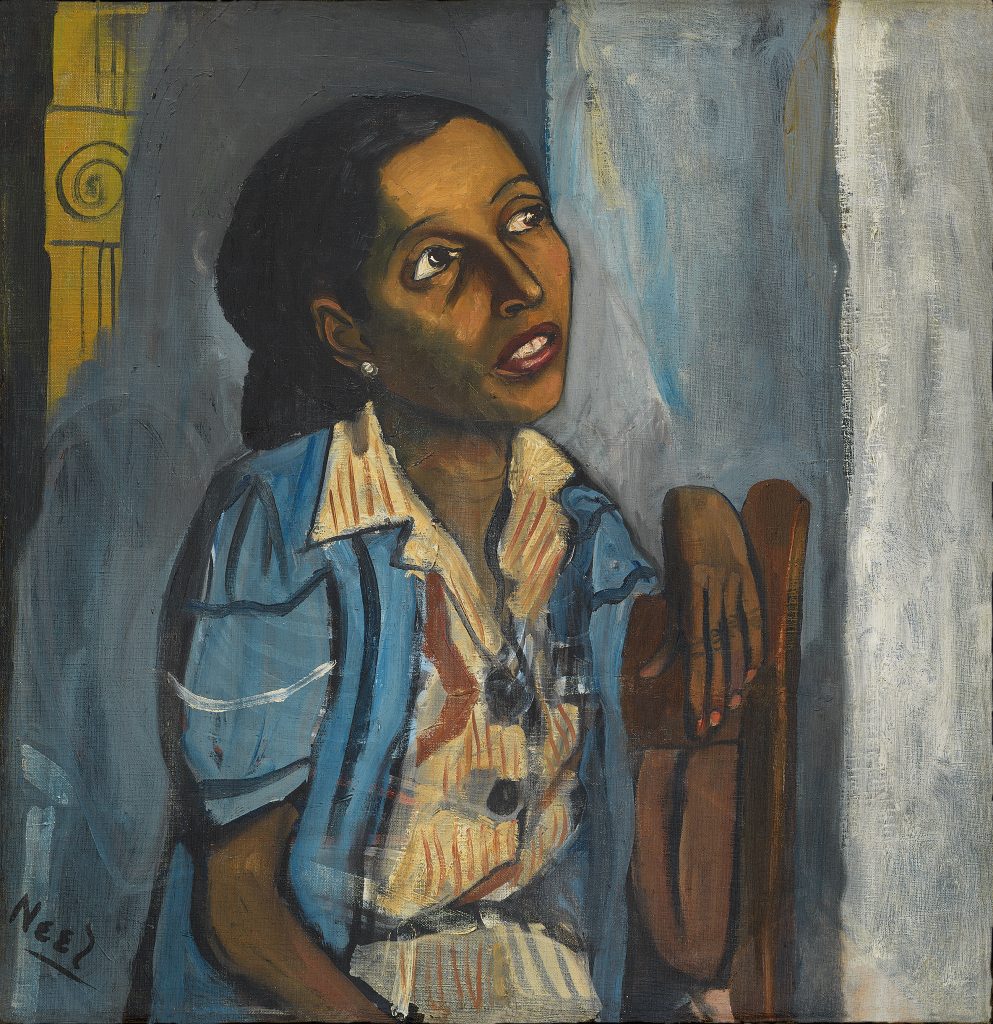
Alice Neel, Mercedes Arroyo (1952). © The Estate of Alice Neel.
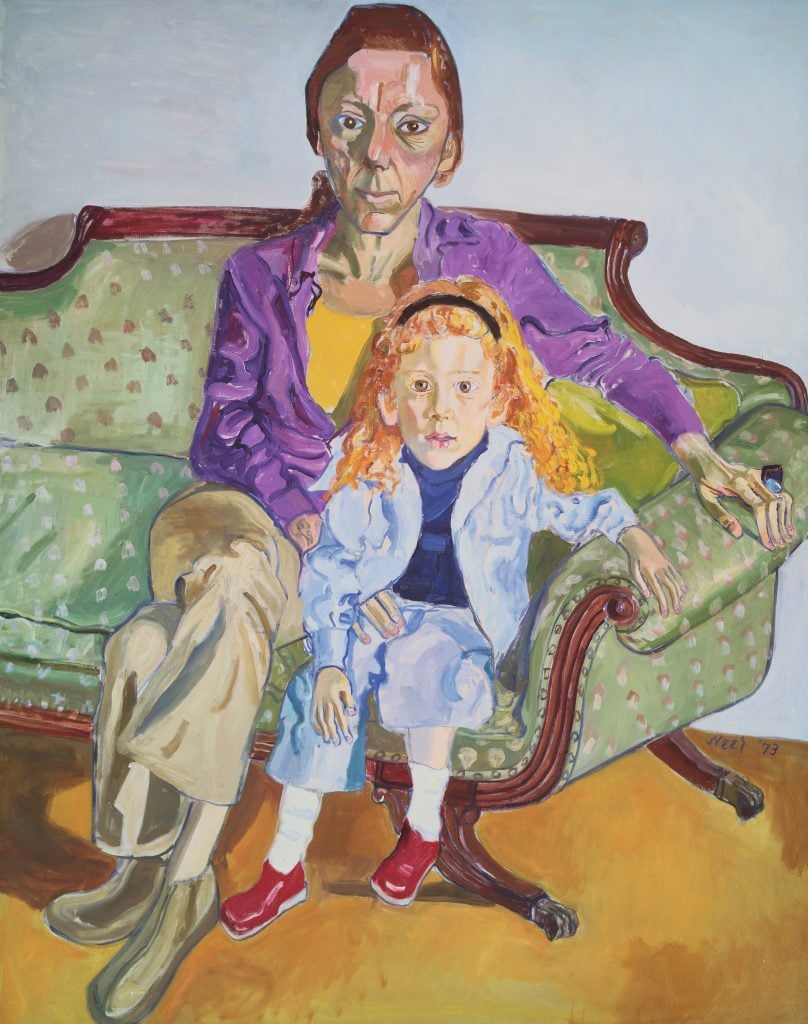
Alice Neel, Linda Nochlin and Daisy (1973). © The Estate of Alice Neel.
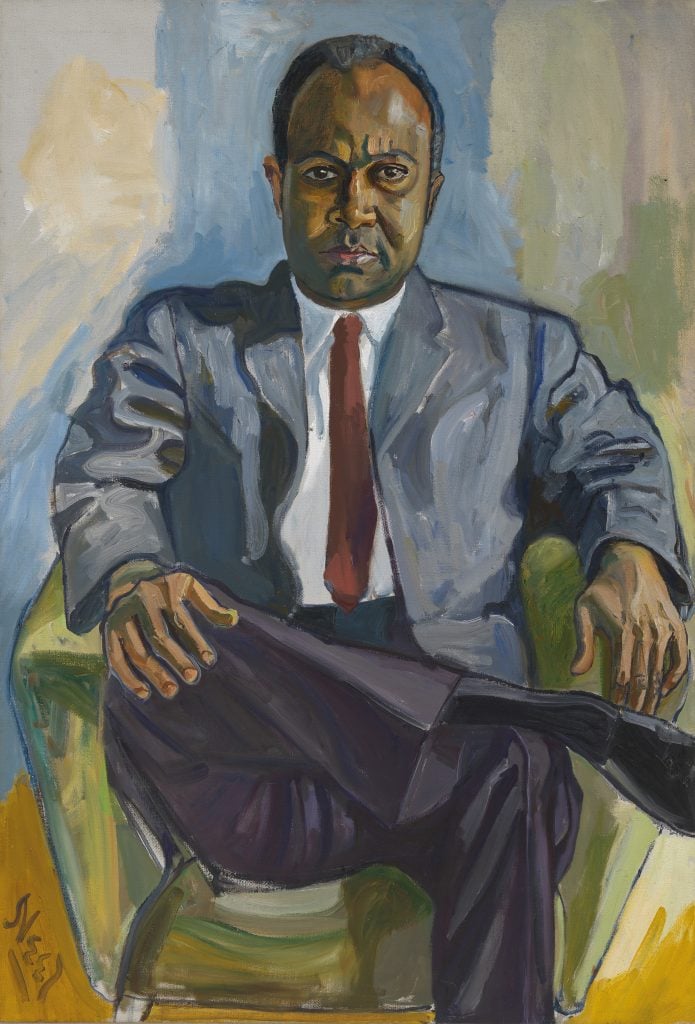
Alice Neel, James Farmer (1964). © The Estate of Alice Neel.
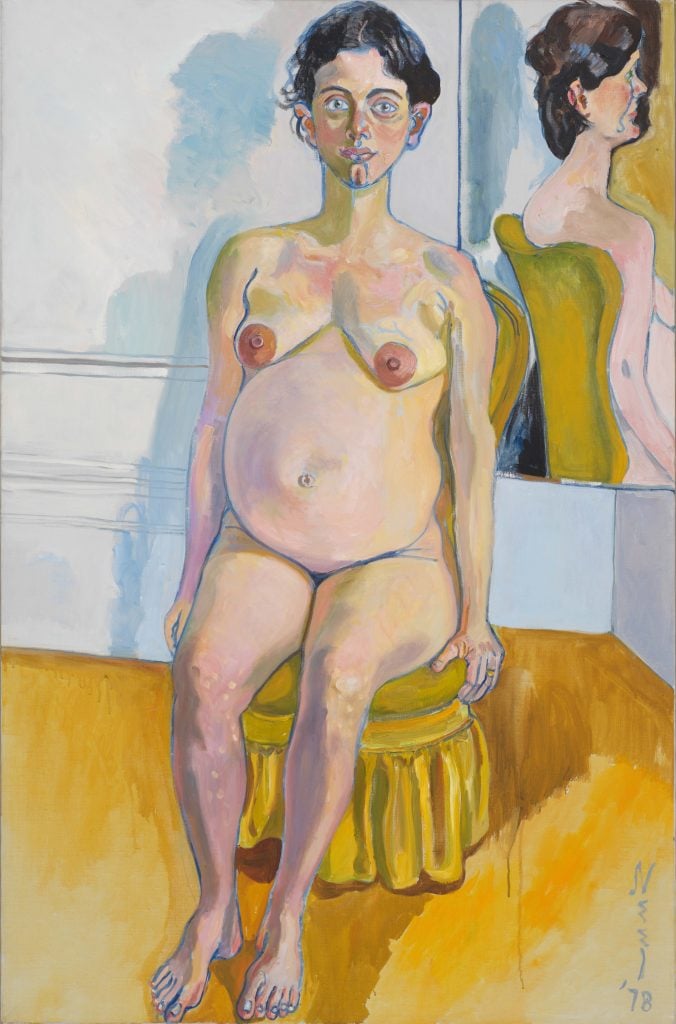
Alice Neel, Margaret Evans Pregnant (1978). © The Estate of Alice Neel.
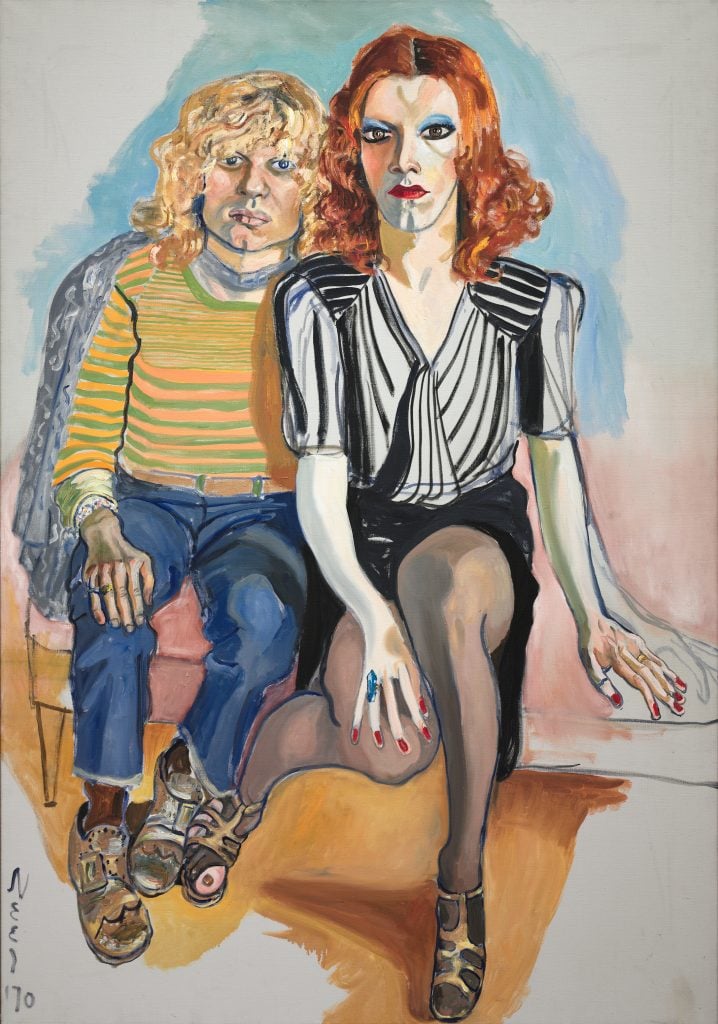
Alice Neel, Jackie Curtis and Ritta Redd (1970). © The Estate of Alice Neel.
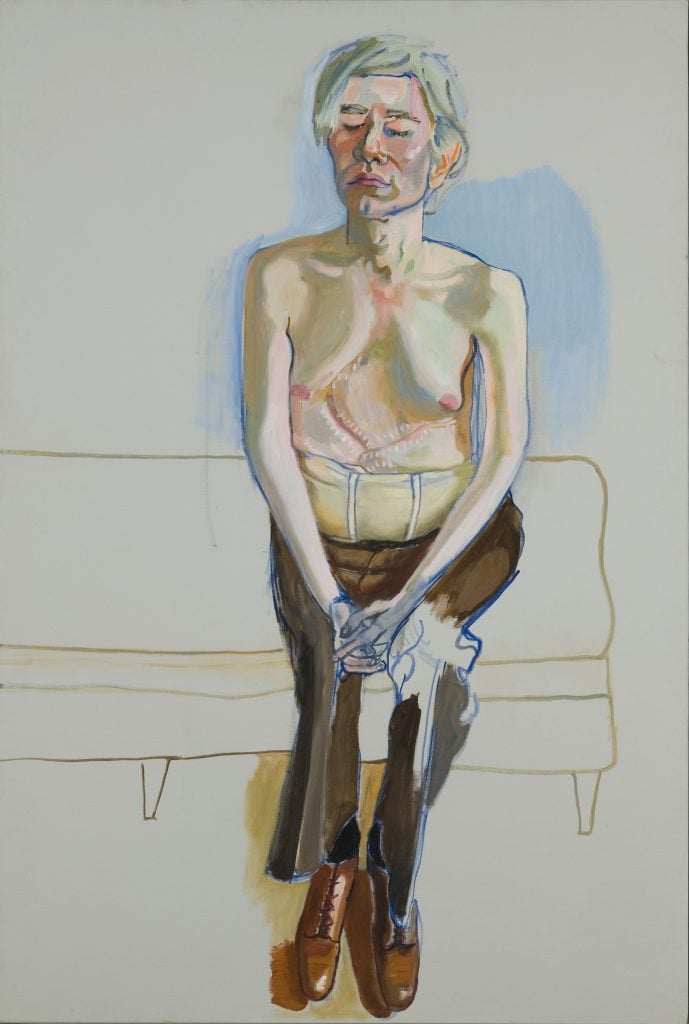
Alice Neel, Andy Warhol (1970). © The Estate of Alice Neel.